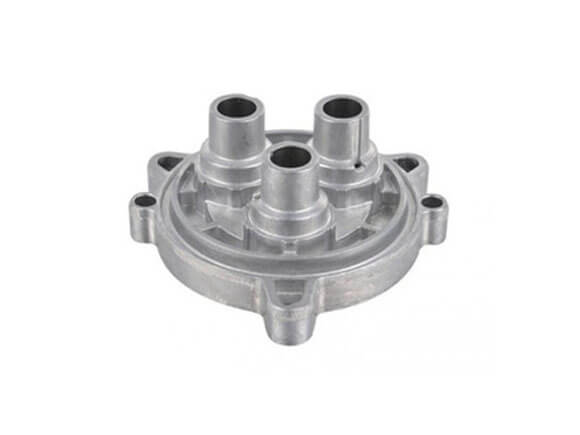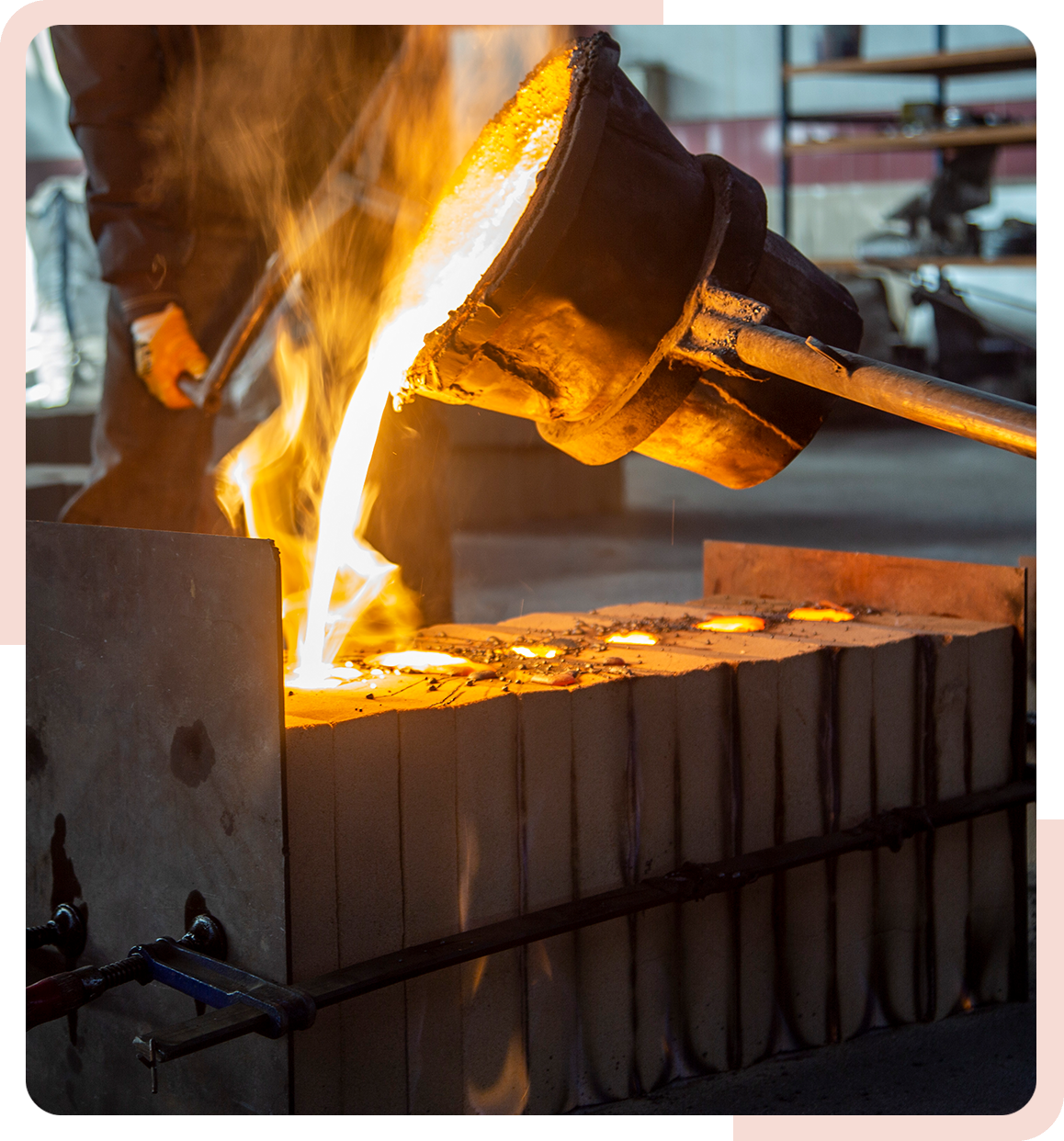How Aluminum Foundry Supports Sustainable and Eco-Friendly Manufacturing
Wiki Article
Aluminum Casting Techniques: a Deep Dive Into Materials and Techniques for Success
Aluminum casting techniques play a crucial function in production. Different methods exist, each suited to various applications and needs. Sand casting is preferred for larger components, while die casting is recognized for its precision in high-volume production. Financial investment casting uses comprehensive layouts with remarkable coatings. Understanding these distinctions can considerably impact project end results. Aluminum Casting Company. Nevertheless, picking the appropriate technique is not constantly uncomplicated, leading to crucial factors to consider that should be explored furtherUnderstanding Aluminum Casting: An Introduction
Aluminum casting is an important production process utilized across numerous sectors to develop detailed elements with high precision. This technique includes pouring liquified aluminum into a mold and mildew, enabling it to take the form and solidify of the desired component. The adaptability of aluminum, integrated with its light-weight and corrosion-resistant homes, makes it a suitable choice for applications in automobile, aerospace, and durable goods.Numerous casting techniques exist, each fit to certain needs and project ranges. Factors such as mold and mildew materials, cooling down rates, and the complexity of the design play a substantial duty in identifying one of the most effective technique. In addition, the properties of the aluminum alloy made use of can impact the last item's stamina, surface area, and longevity coating.
Recognizing the basics of aluminum casting enables producers to optimize manufacturing processes, minimize waste, and assurance premium output, which is crucial in today's open market.
Sand Casting: Techniques and Applications
Amongst the numerous methods used in aluminum casting, sand casting stands apart due to its adaptability and cost-effectiveness. This technique involves producing a mold from a combination of sand and binder, which can be shaped to accommodate intricate styles. When the mold and mildew is ready, liquified aluminum is put into it, enabling detailed attributes and details to be caught.Sand casting is particularly valuable for producing large parts and low-volume production runs, making it optimal for automobile elements, equipment components, and creative sculptures. The strategy also accommodates a series of aluminum alloys, improving its flexibility in different applications. In addition, using sand as a mold product permits easy improvement and reuse, adding to eco lasting methods. Nonetheless, achieving high dimensional accuracy can present obstacles, necessitating competent workmanship and cautious control of the casting process. Overall, sand casting stays a fundamental method in aluminum foundries worldwide.
Die Casting: Precision and Effectiveness
Die casting is an extremely effective approach of creating aluminum components with outstanding dimensional precision and surface finish. This procedure includes requiring molten aluminum into an exactly machined mold and mildew under high stress, which permits detailed designs and marginal product waste. The fast cooling of the alloy within the mold and mildew causes a solidified part that often requires little to no additional machining.Die casting is particularly advantageous for high-volume manufacturing runs, where consistency and speed are critical. It sustains the production of complex geometries, making it suitable for numerous applications, including vehicle, aerospace, and consumer items.
Additionally, the process can accommodate numerous aluminum alloys, boosting the mechanical residential properties of the finished items. With its ability to produce lightweight yet resilient elements, die casting stands apart as a preferred technique in contemporary production, supplying both precision and efficiency in aluminum casting.
Investment Casting: Detail and Intricacy
Investment casting, additionally known as lost-wax casting, is a look here accurate and flexible approach for producing intricate aluminum elements. This strategy is especially valued for its ability to create elaborate geometries and great details visit this site that are usually unattainable with other casting techniques. The procedure begins with a wax pattern, which is coated in a ceramic shell. As soon as the shell solidifies, the wax is melted away, leaving a thorough mold for aluminum pouring.The advantages of investment casting consist of superior surface area coating and dimensional precision, decreasing the need for extensive machining afterward. It is specifically useful for small to medium manufacturing runs where precision is critical. This approach accommodates numerous aluminum alloys, enhancing its applicability across industries. Aluminum Casting Company. Ultimately, financial investment casting attracts attention for its capacity to deliver both aesthetic appeal and useful performance in aluminum components, making it a recommended option for developers and designers looking for facility services

Selecting the Right Technique for Your Task
Exactly how can one determine the most ideal aluminum casting technique for a details job? The choice procedure depends upon a number of important variables, including the intricacy of the design, the preferred surface coating, and manufacturing volume demands. For elaborate designs, investment casting usually confirms advantageous as a result of its capability to capture fine details. Alternatively, sand casting might be liked for bigger, less intricate components, offering cost-efficiency and flexibility in production.Considerations concerning tolerances and mechanical properties of the last item are crucial. For high-performance elements, die casting may be the most effective option, as it offers premium dimensional accuracy and surface high quality. Additionally, understanding the material residential properties and compatibility with the picked approach is necessary for ensuring the success of the task. Ultimately, read the full info here a comprehensive assessment of these variables will certainly guide the decision-making procedure, leading to the most efficient aluminum casting method for the details project at hand.
Frequently Asked Inquiries
What Is the Ecological Impact of Aluminum Casting Methods?

How Can I Enhance the Surface Area Finish of Cast Aluminum?
To improve the surface area finish of actors aluminum, one can make use of methods such as sandblasting, brightening, and using layers. Appropriate mold and mildew style and temperature level control additionally considerably enhance the last surface top quality of the cast product.What Security Precautions Should Be Taken Throughout Aluminum Casting?
During aluminum casting, important safety precautions include wearing safety equipment, ensuring correct ventilation, using fireproof products, keeping a secure range from molten steel, and sticking to devices security protocols to avoid injuries and accidents.Exactly how Do I Troubleshoot Usual Casting Flaws?
To troubleshoot usual casting problems, one should inspect the mold for damages, analyze the alloy structure, check putting temperature, readjust cooling prices, and warranty proper venting to decrease air entrapment and boost casting high quality.What Are the Costs Linked With Different Aluminum Casting Techniques?
The expenses connected with different aluminum casting methods vary considerably, influenced by factors such as product expenditures, labor, manufacturing, and equipment range. Budget factors to consider are vital for selecting one of the most appropriate casting method for certain jobs.
Sand casting is preferred for bigger components, while die casting is recognized for its precision in high-volume production. Among the various techniques utilized in aluminum casting, sand casting stands out due to its flexibility and cost-effectiveness. Die casting is a highly efficient method of creating aluminum elements with extraordinary dimensional precision and surface finish. Financial investment casting, additionally recognized as lost-wax casting, is a specific and flexible method for creating complex aluminum parts. How can one establish the most ideal aluminum casting technique for a specific task?
Report this wiki page